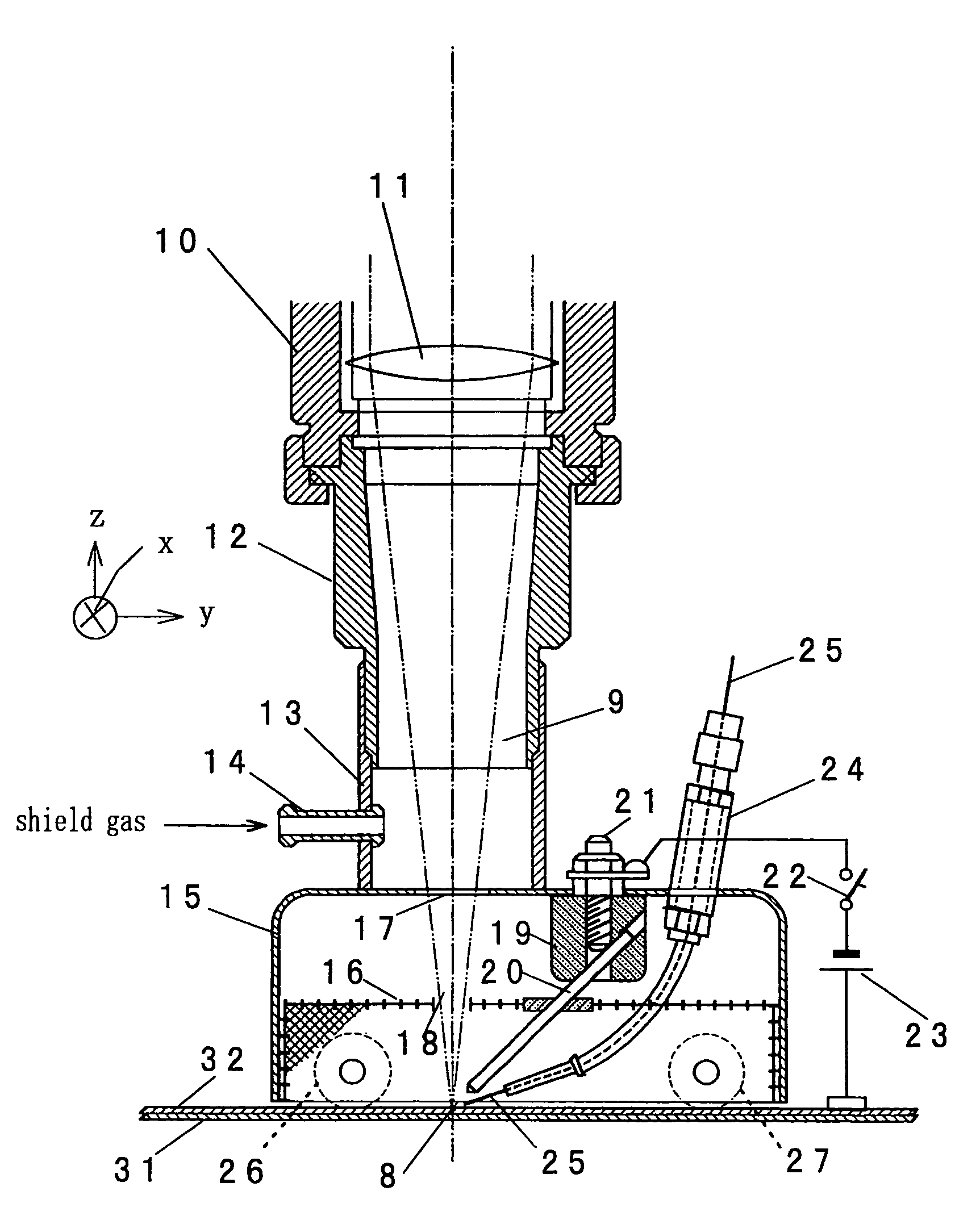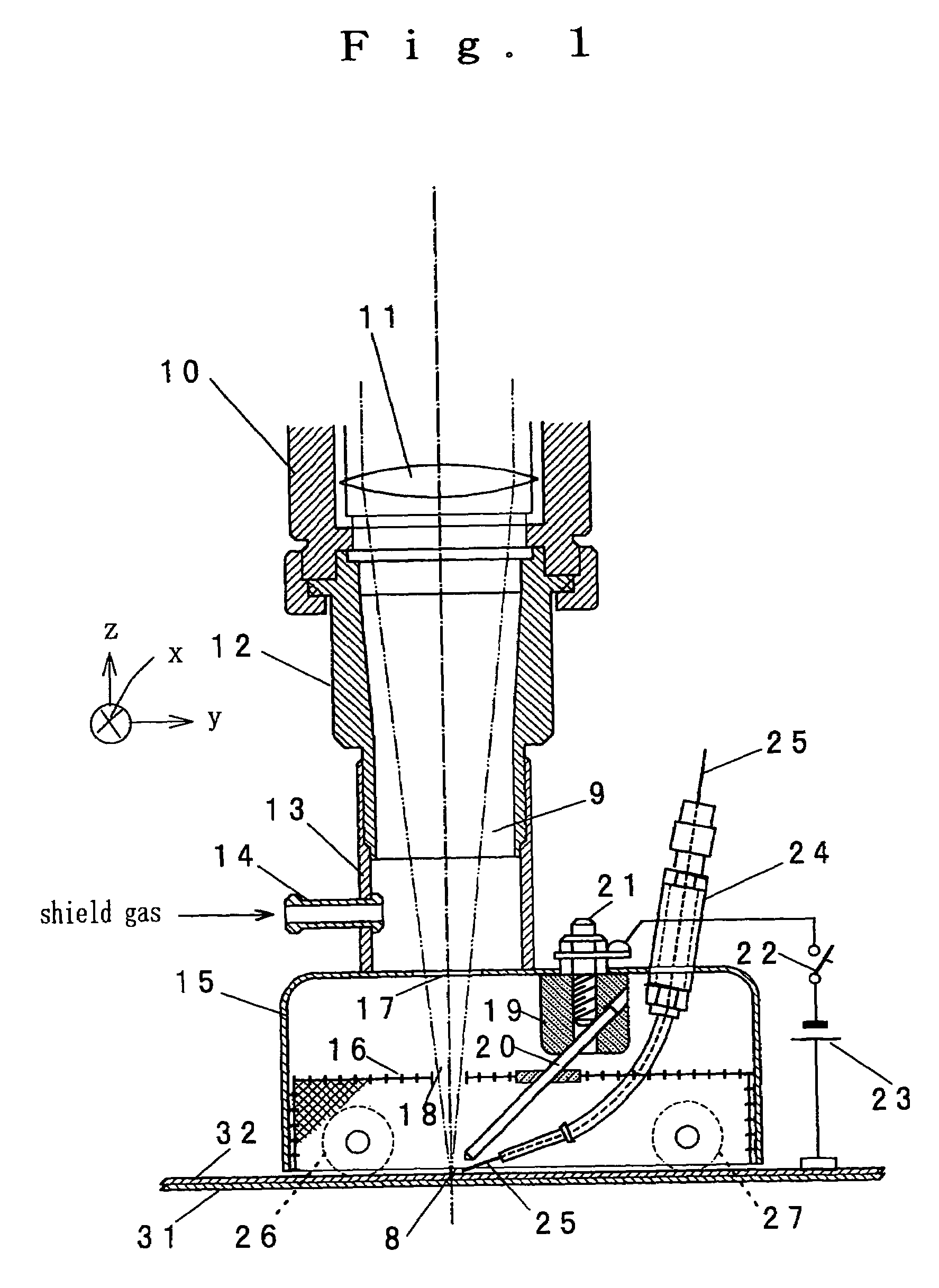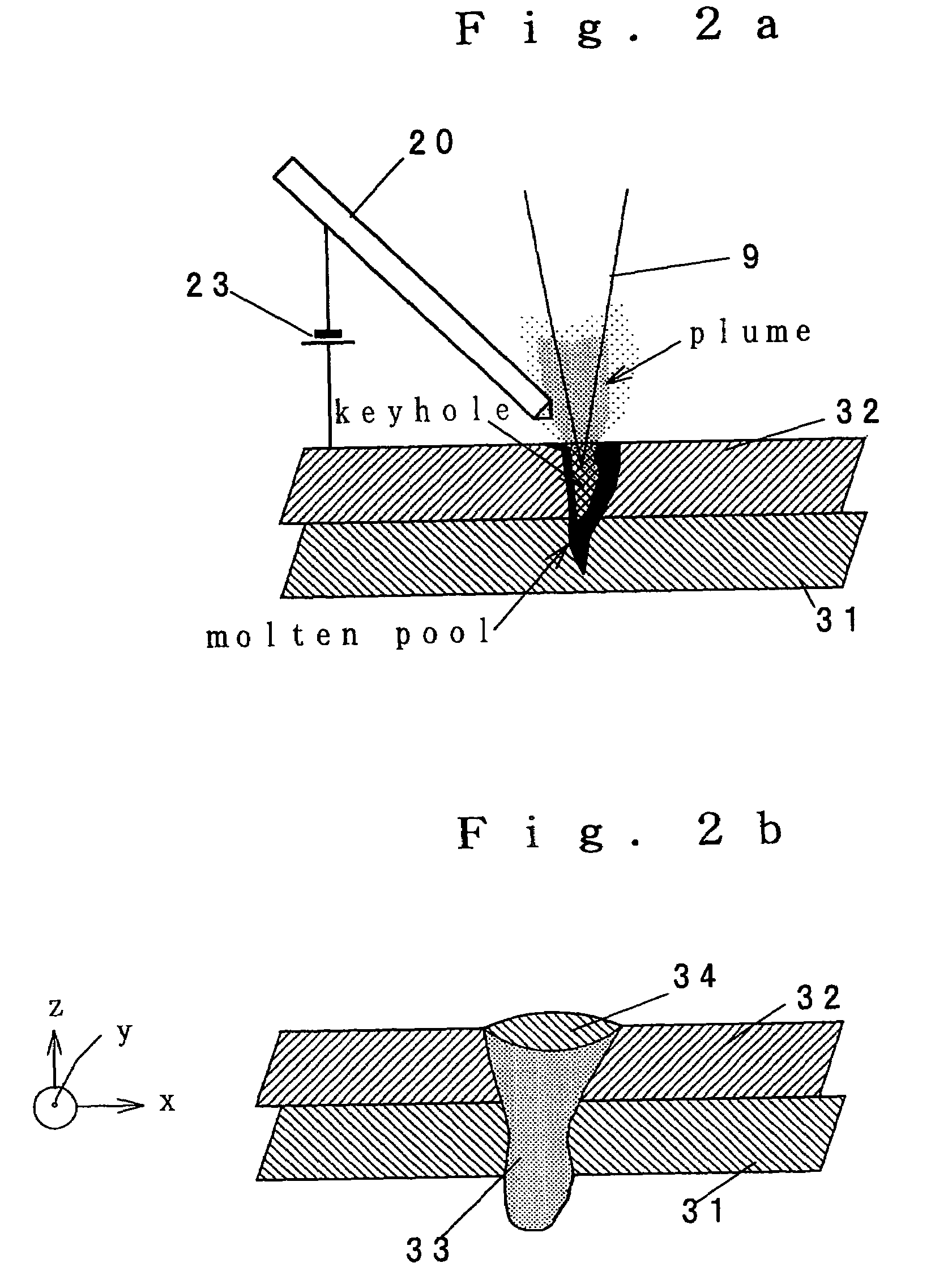Method and apparatus for composite YAG laser/arc welding
a composite yag laser and arc welding technology, applied in the direction of welding apparatus, manufacturing tools, welding/cutting media/materials, etc., can solve the problems of severe demand, preventing the attainment of satisfactory bonding strength, and defects in welding, so as to increase the width of fusion and increase the depth of fusion. , the effect of high efficiency
- Summary
- Abstract
- Description
- Claims
- Application Information
AI Technical Summary
Benefits of technology
Problems solved by technology
Method used
Image
Examples
first embodiment
[0034]FIG. 1 shows a composite YAG laser / arc welding apparatus according to one embodiment of the present invention. YAG laser beam 9 is supplied from a YAG laser source, not shown, through an optical fiber cable, not shown, to a YAG irradiation head 10. The head 10 includes a lens 11 through which the laser radiation is passed to converge to a focus 8 (a point being irradiated) through an objective sleeve 12 and a relay sleeve 13.
[0035]An objective hood 15 is secured to the bottom of the relay sleeve 13. A gas commutation metal network 16 is disposed within the hood 15 to divide the interior of the hood into an upper space or a gas supply space and a lower space or welding space. The hood 15 and the metal network 16 are formed with openings 17 and 18, respectively, which allow the laser radiation 9 to be directed toward the focus 8.
[0036]An electrode base 19 formed of ceramics is secured to the hood 15, and a tungsten electrode 20 is mounted on the electrode base 19 and is oriented...
second embodiment
[0053]FIG. 3a shows a composite YAG laser / arc welding apparatus according to a second embodiment. In the second embodiment, there is no filler wire feeding, and thus the wire guide 24 of the composite welding apparatus of the first embodiment is omitted. In this embodiment, because no power is dissipated in melting the filler wire, the arc current is reduced. As a consequence, a lap welding bead as shown in FIG. 3b is obtained. Again, the width of faying interface is large and the fusion is deep. A high rate welding operation with a stabilized quality is possible. Welding conditions used are given below.[0054]Welded member 31: material A5052, 2 mm thick[0055]Welded member 32: material A5052, 2 mm thick[0056]YAG laser: output 4 KW, without assist gas (center gas)[0057]Arc
[0058]Current: 150 A
[0059]Tungsten electrode: 2.4 mm in diameter[0060]Shield gas: Ar 25 liters / min[0061]Welding rate: 4 m / min
[0062]As described above, since the plume generated by the laser irradiation starts an elec...
PUM
 Login to View More
Login to View More Abstract
Description
Claims
Application Information
 Login to View More
Login to View More - R&D
- Intellectual Property
- Life Sciences
- Materials
- Tech Scout
- Unparalleled Data Quality
- Higher Quality Content
- 60% Fewer Hallucinations
Browse by: Latest US Patents, China's latest patents, Technical Efficacy Thesaurus, Application Domain, Technology Topic, Popular Technical Reports.
© 2025 PatSnap. All rights reserved.Legal|Privacy policy|Modern Slavery Act Transparency Statement|Sitemap|About US| Contact US: help@patsnap.com



